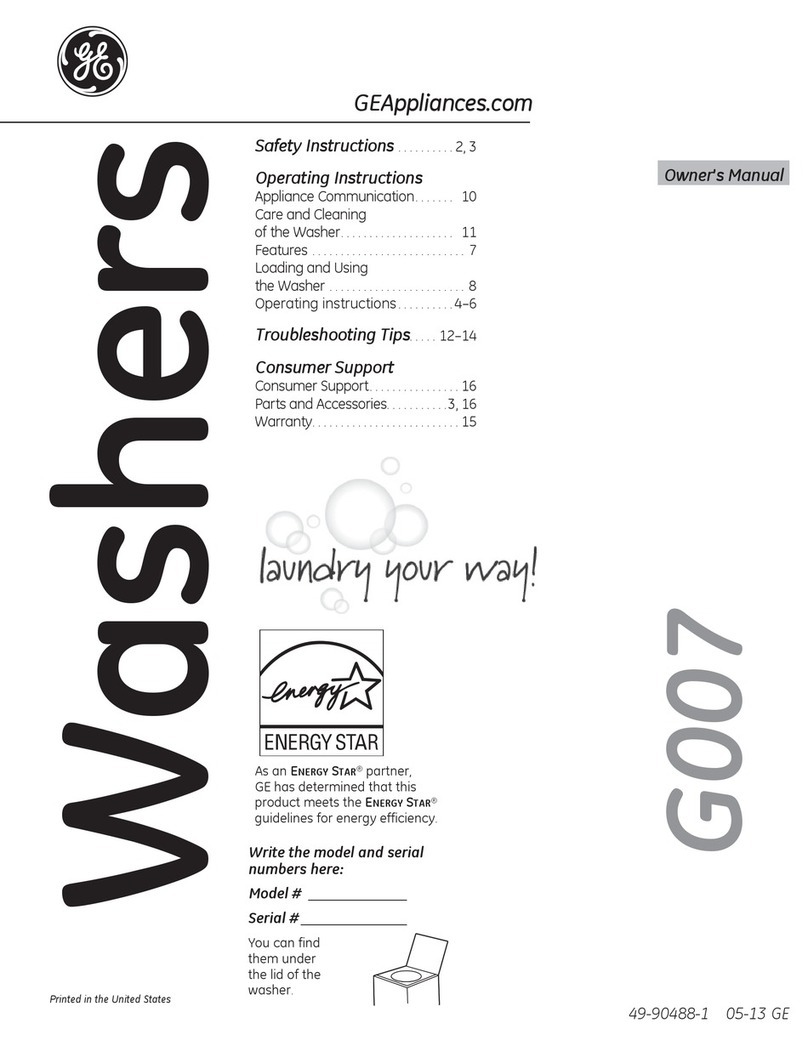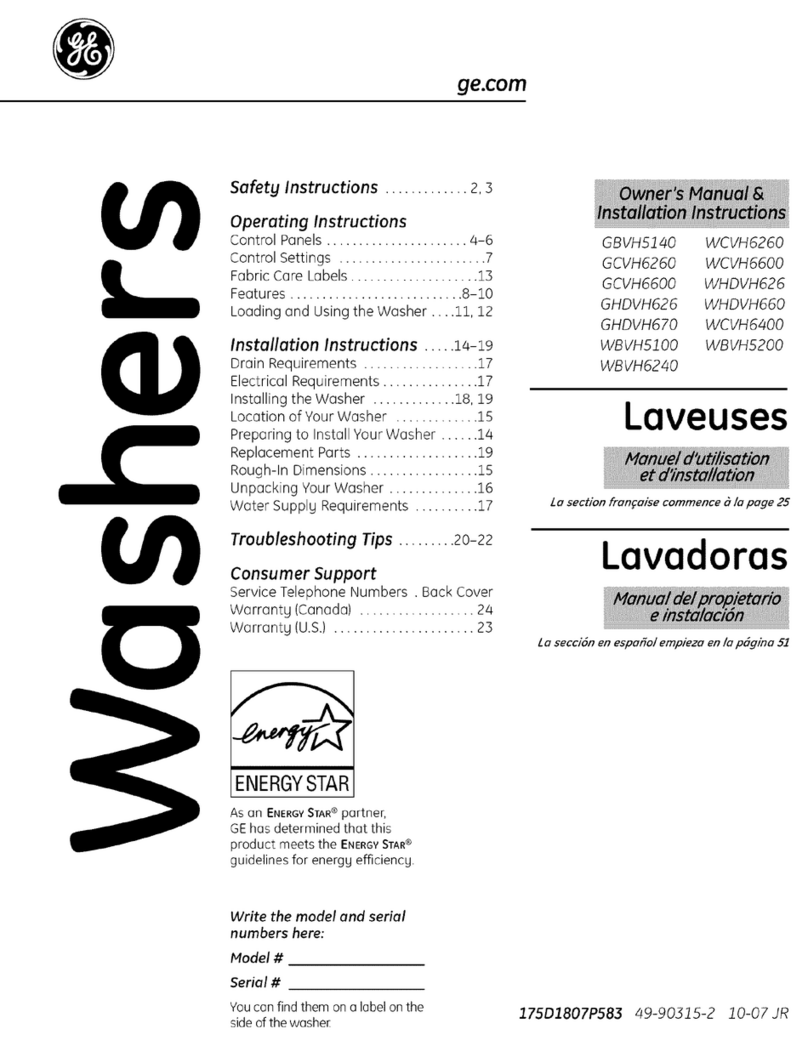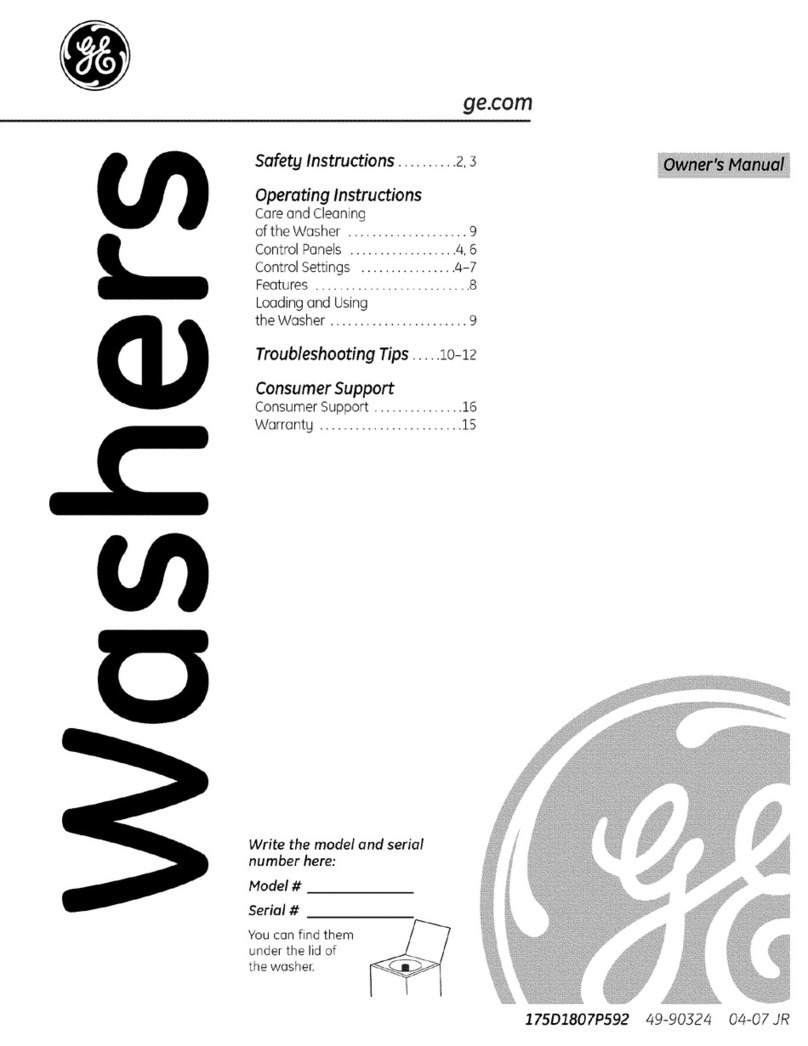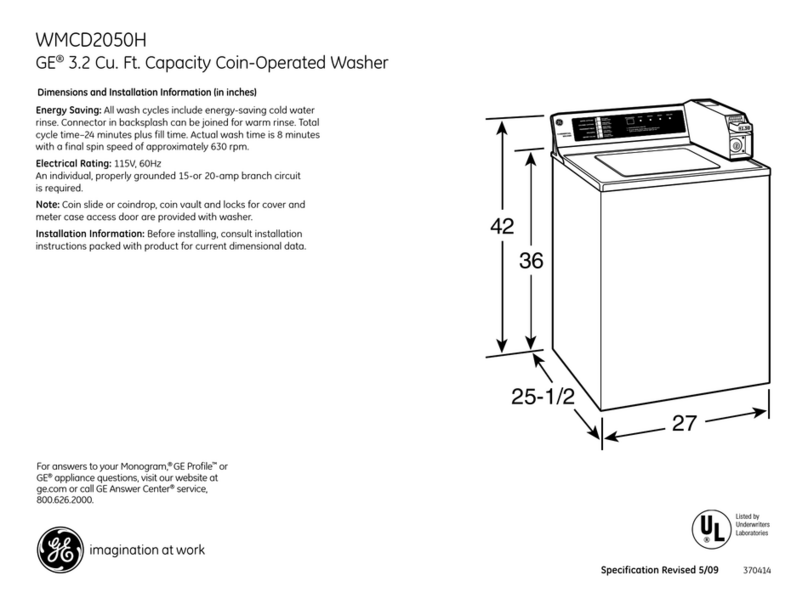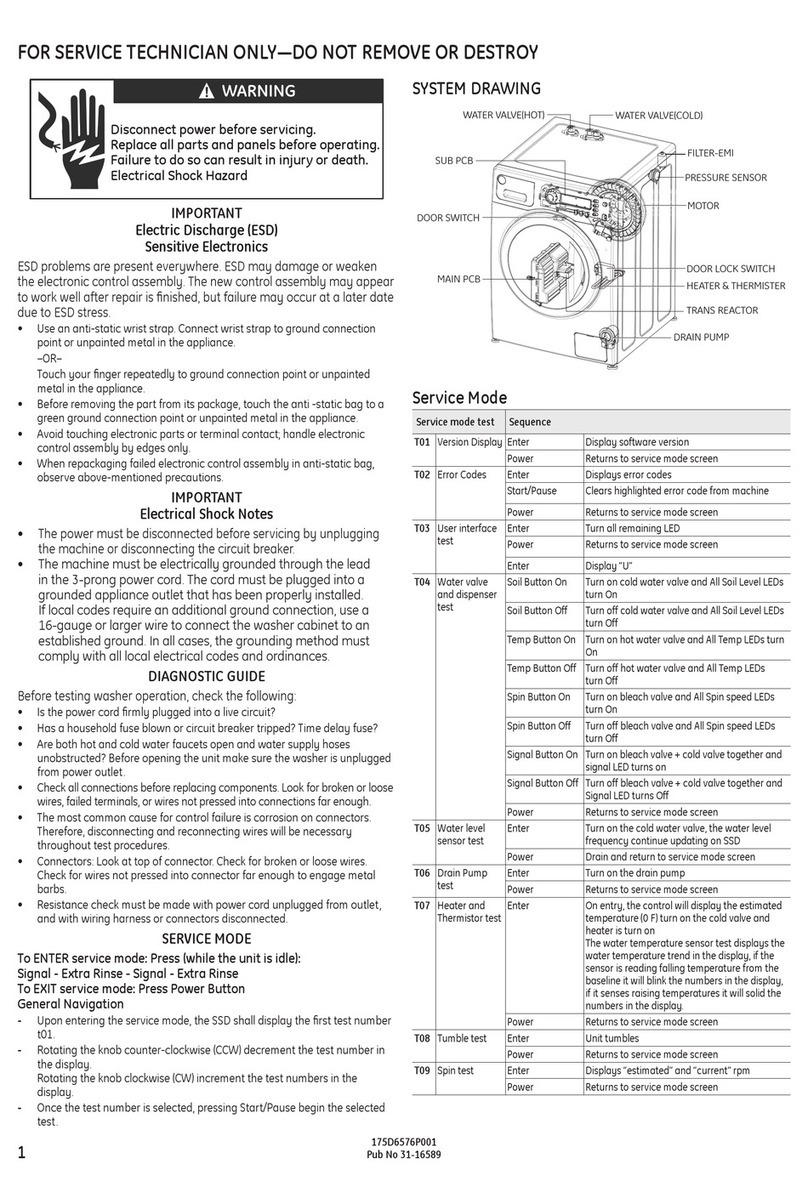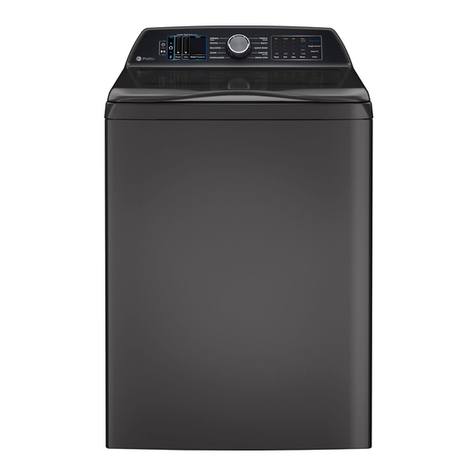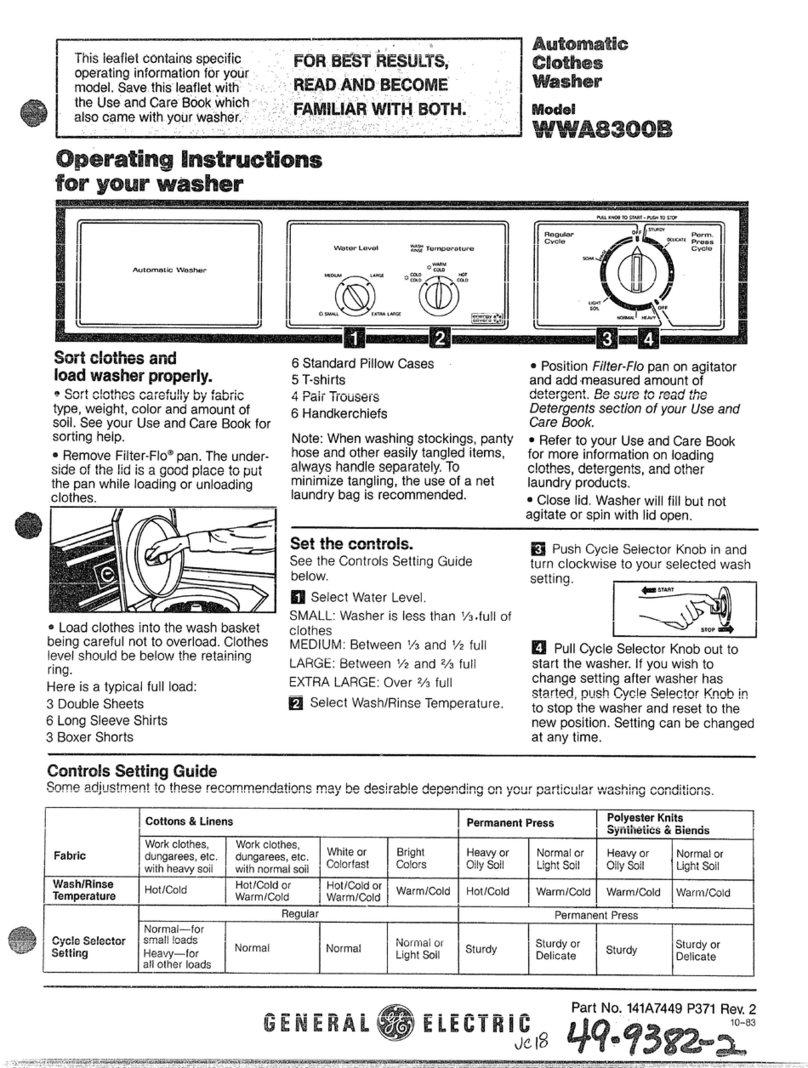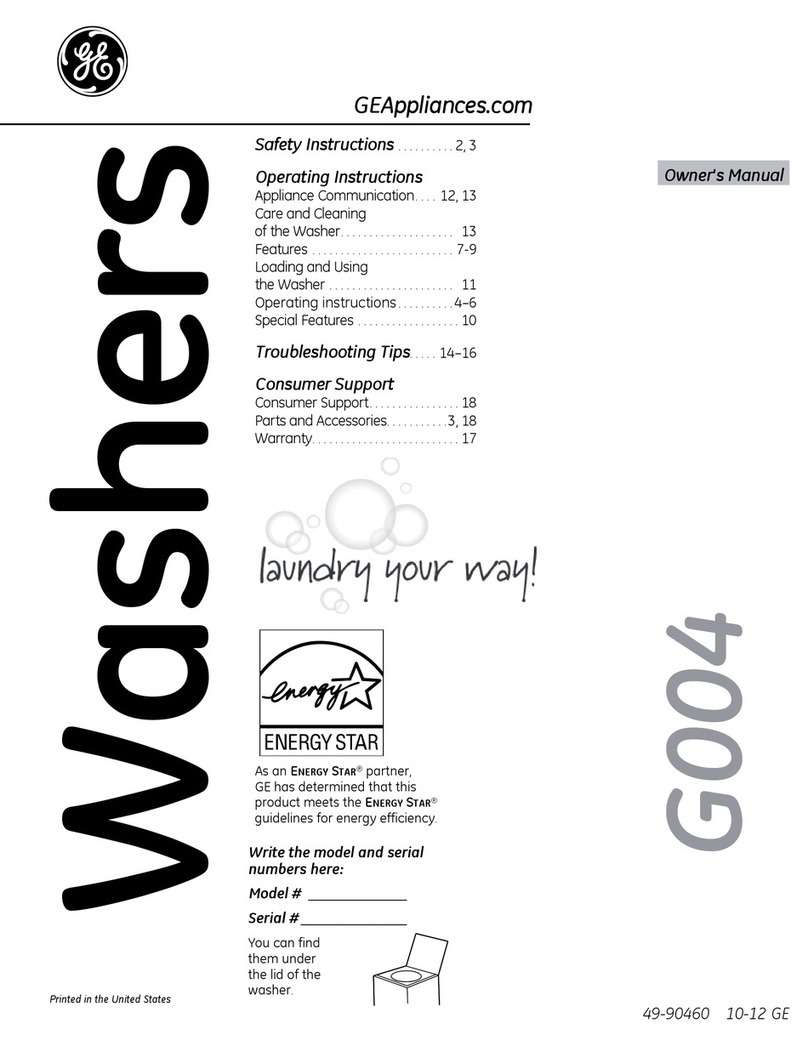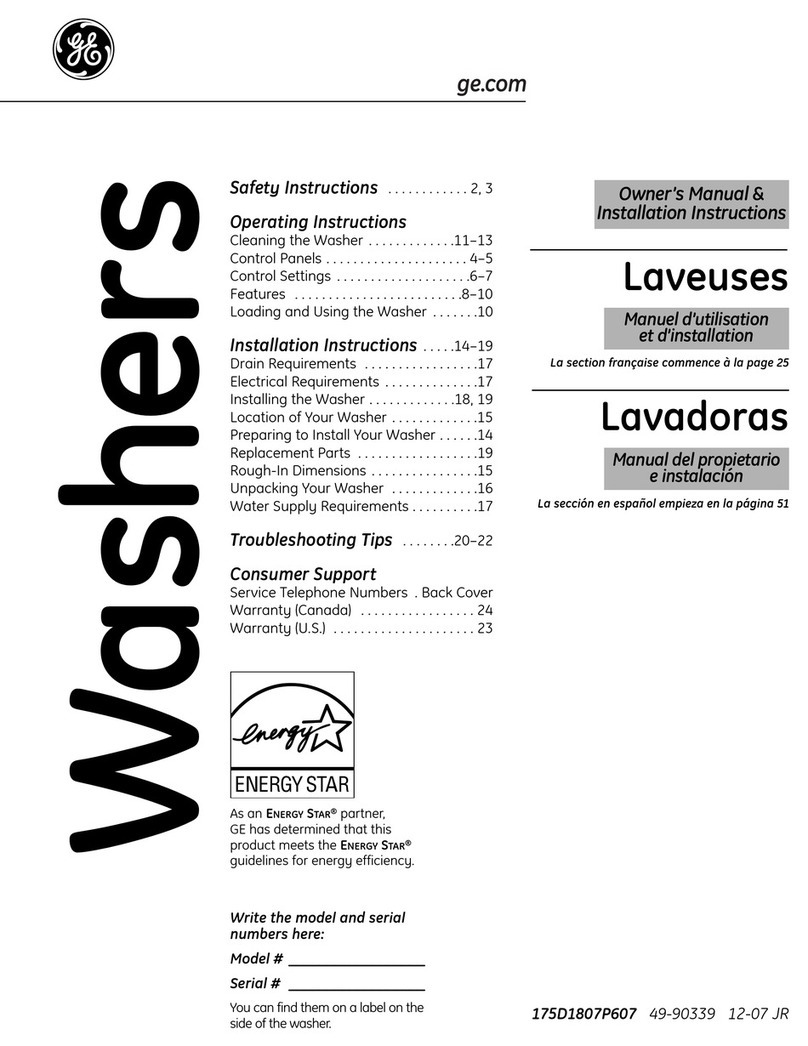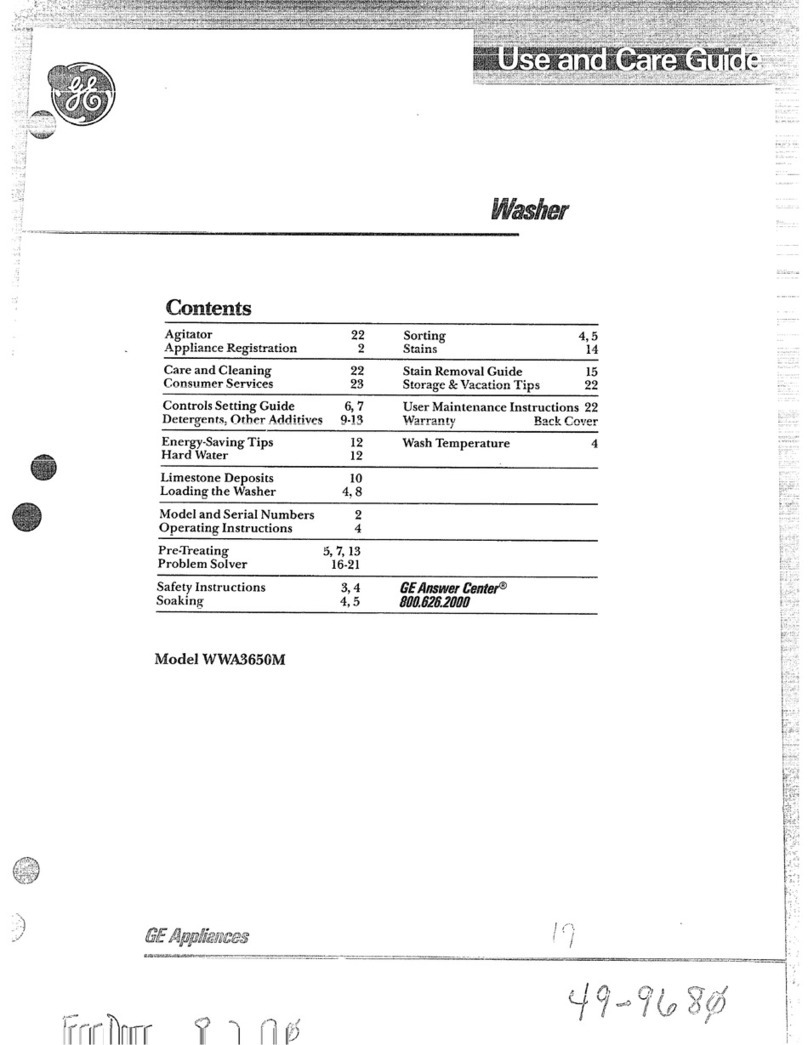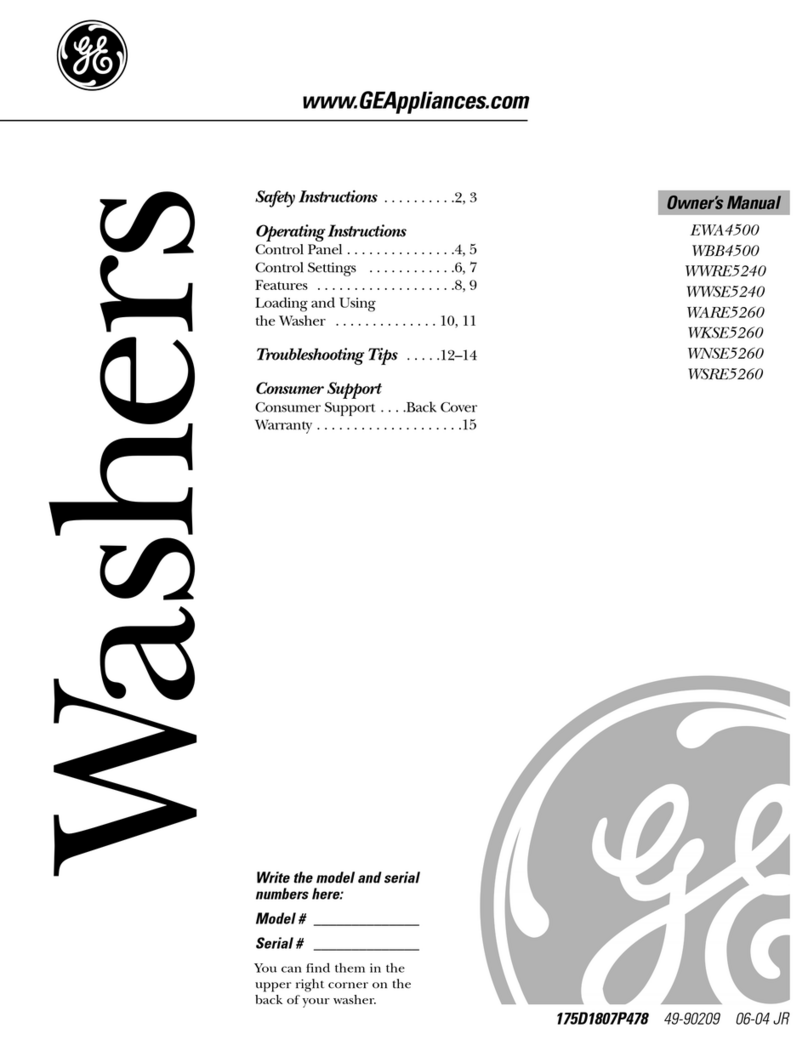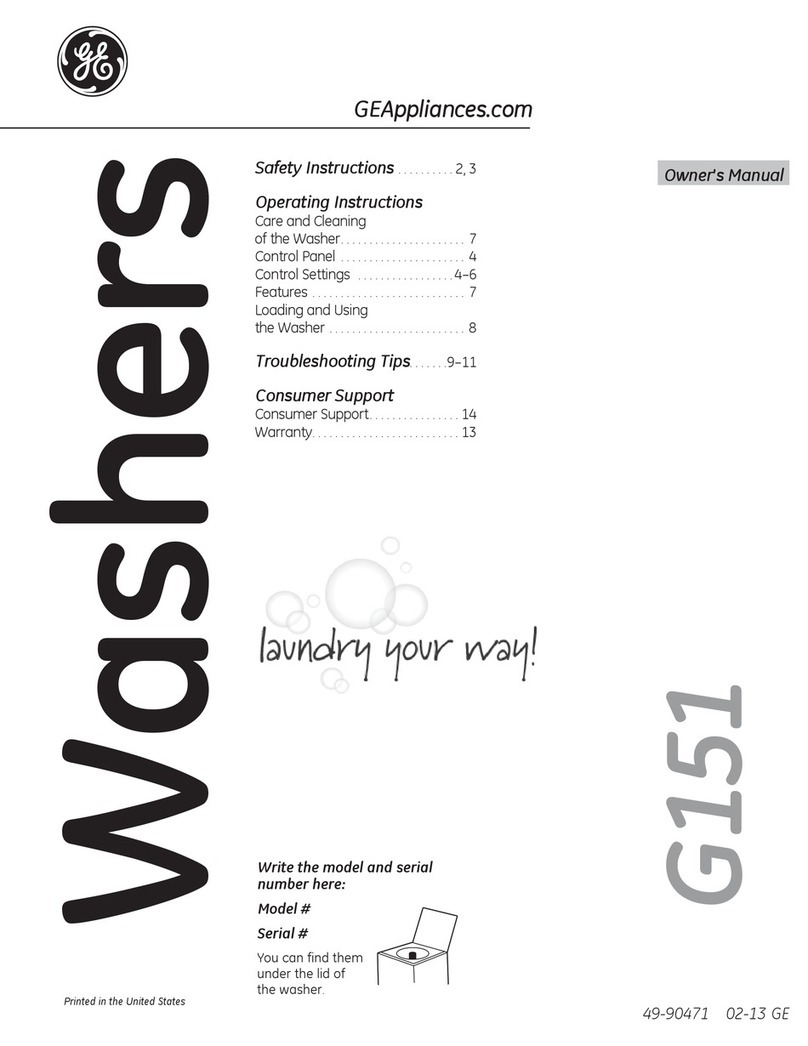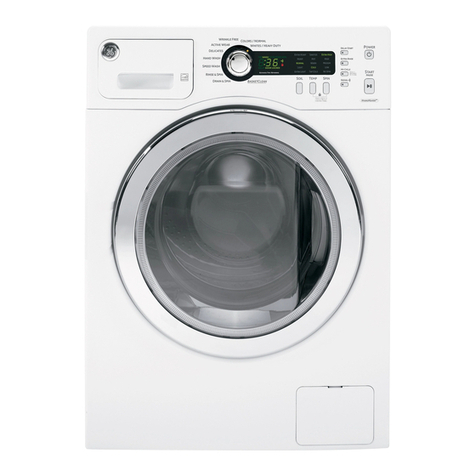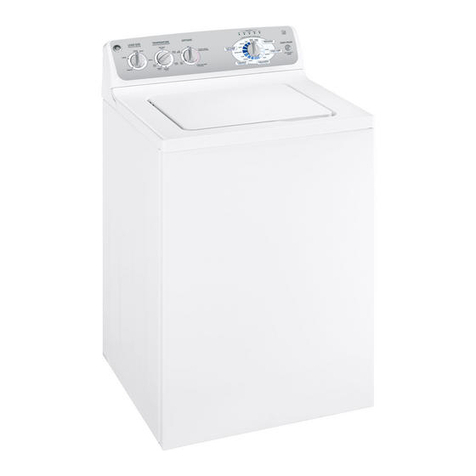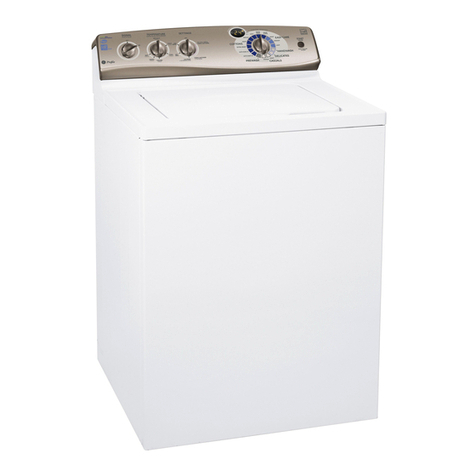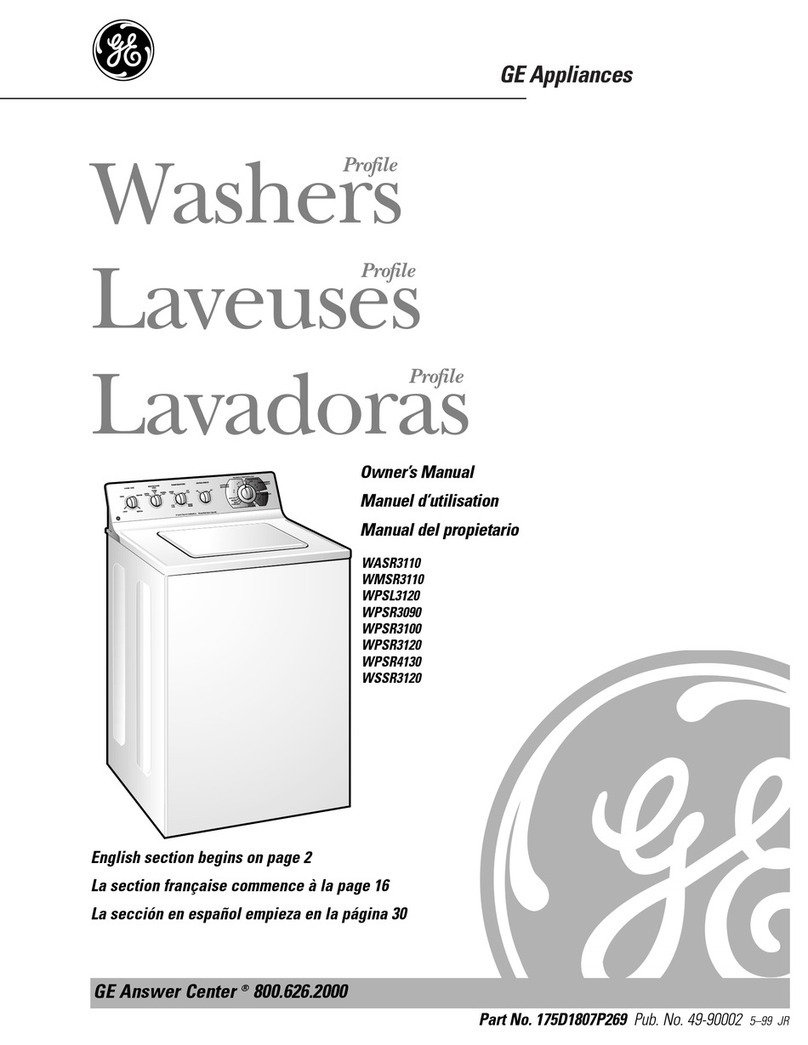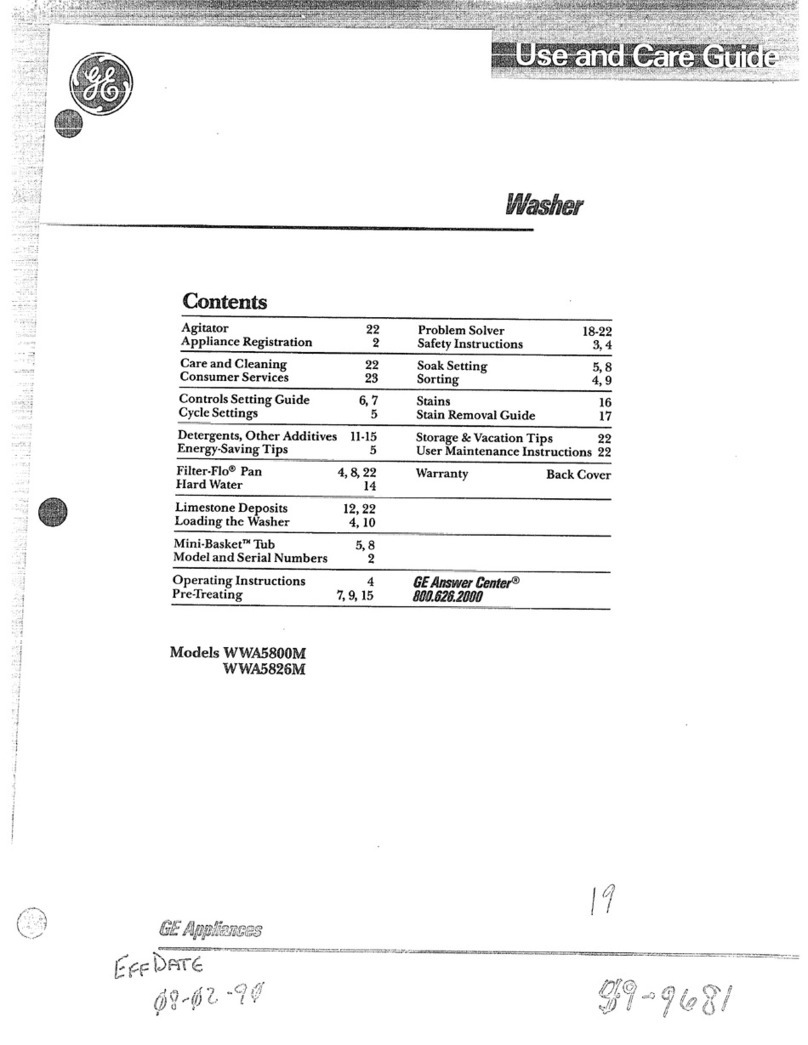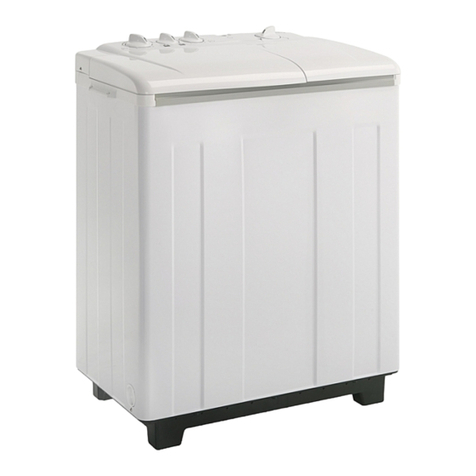
Read
W
instructions
kfom
using your
appEance.
A
WARN~G-To
reduce
the
risk
of fire, electric shock, or injury
to
persons when using your appliance,
fofiow
basic precautions, including the following:
●
Use this appliance
only for its intended purpose
as described in this Use and Care Book.
o
●
This washer must be properly
p-,(b
*W$
:*.
installed and located in accordance
with the Installation Instructions
before
if
is used.
If you did not receive an
Installation Instructions sheet with your
washer, you can obtain one by calling, toll
free, the GE Answer
Center!
800.626.2000.
—Proper/y ground to conform with all
governing codes and ordinances. Follow
details in Instillation Instructions.
—kstall
or store where it will not be exposed
to temperatures below freezing or exposed
to the weather.
<onnect
to a properly rated, protected and sized
power supply circuit to avoid electrical overload.
<onnect
to adequate plumbing and drain
facilities as described in the Installation
Instructions.
●
Turn off water faucets when the washer is not in
use to relieve pressure on hoses and valves, and
to minimize leakage if a hose
or
valve should
break or rupture.
M
●
men
disconnecting this appliance
~
pull by the plug rather than the cord to
avoid damage to the cord or junction of
cord and plug. Make sure that the cord
is located so that it will not be stepped on, tripped
over or otherwise subjected to damage or stress.
●
Do not repair or replace any part
of the appliance or attempt any
servicing unless specifically
recommended in this Use and Care Book or
in
pubtished
user-repair instructions that you
understand and have the
s~b
to carry out.
To minimize the possibility of
i~ury:
&
●
Do not mix chlorine bleach with
ammonia or acids such
as
vinegar
an~or
rust remover. Mixing
can
produce a
toxic gas which may cause death.
f
‘
‘t,
“;;:;:::;~::::,:g:::::,
h
s“
.
combustible or explosive substances
(such as wax, paint, gasoline,
degreasers,
dry-
cleaning solvents, kerosene, etc.) which may
ignite or explode. Do not add these substances
to the wash water. Do not use these substances
around your washer
andor
dryer during
operation.
A
WARNING—HYDROGEN GAS
is produced by the chemical action
within your water heater and the gas
can accumulate in the water heater
antior
water
pipes if hot water has not been used for a period
of two weeks or longer. HYDROGEN GAS
CAN
BE EXPLOSIVE UNDER THESE
CIRCUMSTANCES. So to prevent the
possibility of damage or injury, if you have not
used hot water for two weeks or more, or move
into a residence in which the hot water system
may not have been used for some time, turn on
all hot water faucets and allow them to run for
several minutes before using any electrical
appliance which is connected to the hot water
system. This will allow any hydrogen gas to
escape. Since the gas is flammable, do not
smoke or use an open flame or appliance
during this process.
●
Never reach into washer while it is
moving. Before loading, unloading
or adding clothes, push in the Cycle
Selector knob to OFF position, then
wait until the machine has completely stopped
before opening the lid.
●
Close supervision is necessary if
this appliance is used by or near
children. Do not allow children
to play inside, on, or with this
appliance or any discarded
appliance. Dispose of discarded appliances and
shipping or packing materials properly. Before
discarding a washer, or removing
from service,
remove the washer lid.
(continued next page)
